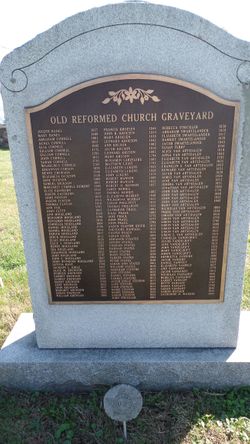James VAN SANT/VANSANT
SAR Patriot #:
P-309855
The following information was assembled from numerous sources and cannot be used directly as proof of Qualifying Service or Lineage.
It is considered a research aid and is intended to assist in locating sources that can be used as proof.
State of Service: PA
Qualifying Service: Private
DAR #: A118849
Birth: 18 Aug 1727 Northampton / Bucks / PA
Death: 31 Jan 1798 Northampton Twp / Bucks / PA
Qualifying Service Description:
Captain Henry Lott's 4th Associated Company, Northampton Twp, Bucks Co, PA
Additional References:
- DAR Patriot Index, pg 702
- Muskingum County Records Vol G, pg 397 Deeds and Vol 12, pg 549 Deeds
- (The Van Sant Family) Denison Genealogy by E. Glenn Denison 1963, pg 478
- Register of Will Doylestown PA and History of Bucks Cunty, PA 2nd edition by Wm. W.H. Davis pg 24-30
- PA Archives 5th Ser, Vol 5, pg 305-306 (Roll of the 4th Association Co. of Northhampton Township, Bucks Co. PA August 19 1775)
Spouse: Jane Janetje Bennet
Children: Aaron; John; Charles; Isaac;
Members Who Share This Ancestor
| Date Approved | Society | ACN | SAR Member Info | Lineage via Child | View Application Detail | |
|---|---|---|---|---|---|---|
| 1975-04-22 | AZ | Unassigned | William R Sant (107815) | John | ||
| 1976-07-23 | IA | Unassigned | Francis Eugene Van Sant (109738) | John | ||
| 1987-06-29 | AZ | 224780 | Todd Gilliss Handy (129643) | John | ||
| 1997-01-28 | FL | 202239 | William Craven Whiteside II (147611) | Isaac | ||
| 2013-06-06 | SC | 53534 | Robert Steven May (187484) | Aaron | ||
| 2014-08-07 | MI | 60034 | Thomas Lester Reardon Jr. (191903) | John | ||
| 2016-05-10 | MI | 69205 | Jonathan Thomas Reardon (198575) | John | ||
| 2017-03-24 | NC | 73674 | Robert Leslie Hash (201865) | James | ||
| 2018-01-19 | PA | 79066 | William Francis Van Sant lll (206066) | Charles | ||
| 2018-01-19 | PA | 79067 | William Francis Van Sant IV (206067) | Charles | ||
| 2018-01-19 | PA | 79068 | Thomas William Van Sant (206068) | Charles | ||
| 2018-12-21 | DC | 84264 | Brian Todd Stahl (209915) | Aaron |
Location:
Feasterville / Bucks / PA / USA
Find A Grave Cemetery #:
Marker Type:
Memorial, Legible, Newer
SAR Grave Dedication Date:
Comments:
- Images provided with permission from C Crawford, Find-a-Grave member # 48123041
- It's unclear from the Find-A-Grave memorial if there is an exsisting stone - September 2020
Directions to Cemetery / Gravesite:
The cemetery is located on State Street, just west of Bustleton Pike Road. Don't confuse it with the larger White Garden cemetery a few hundred feet further up the road

